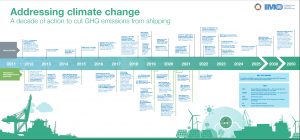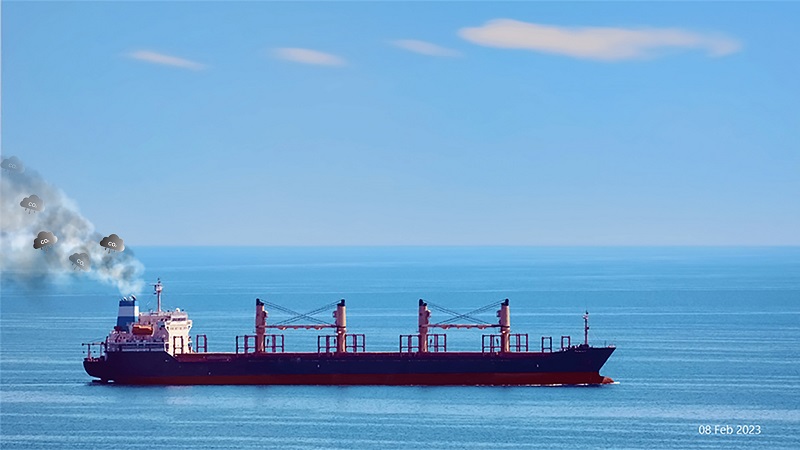The International Maritime Organization (IMO) has set ambitious targets to reduce greenhouse gas emissions from shipping. Specifically, the IMO aims to reduce shipping’s carbon intensity by at least 40% by 2030 and to achieve a zero-emissions shipping industry by 2050. Achieving these targets will require a comprehensive strategy that addresses both the technological and operational aspects of shipping.

Here are some strategies that could be pursued:
- Increase the use of low-carbon fuels: The shipping industry needs to shift away from high-carbon fuels like heavy fuel oil and diesel and move towards low-carbon alternatives like hydrogen, ammonia, and biofuels. The industry needs to invest in research and development to make these fuels more affordable and scalable.
- Implement energy efficiency measures: The IMO has already introduced regulations to improve the energy efficiency of ships, but more can be done. This includes measures like optimizing vessel speed and reducing vessel weight to decrease fuel consumption.
- Embrace new technologies: The shipping industry needs to embrace new technologies like electric propulsion, fuel cells, and wind power to reduce emissions. This will require significant investment in research and development to make these technologies viable for the industry.
- Improve vessel design: The design of ships can have a significant impact on their emissions. New ships should be designed with energy efficiency in mind, using lightweight materials, aerodynamic hulls, and other features that can reduce fuel consumption.
- Develop and deploy carbon capture and storage technology: Carbon capture and storage technology can be used to capture emissions from ships and store them safely underground. The technology is still in its early stages, but the industry needs to invest in research and development to make it viable for the shipping industry.
- Increase transparency and accountability: The industry needs to be more transparent about its emissions and set clear targets for reducing them. This will require collaboration across the industry, including with governments and regulators, to develop a standardized framework for reporting emissions.
- Establish a market-based mechanism: A market-based mechanism like a carbon tax or emissions trading scheme can provide a financial incentive for the industry to reduce emissions. This can encourage the development and deployment of low-carbon technologies and fuels.
Shipping industry needs to pursue a comprehensive strategy that addresses both technological and operational aspects of shipping to achieve the IMO’s decarbonization targets. This will require collaboration across the industry and with governments and regulators to drive innovation and investment in low-carbon technologies and fuels.

There are several highly regarded reports on shipping decarbonization that are widely cited and considered valuable resources. Here are a few examples:
- “Getting to Zero Coalition: Mapping the Pathway to Decarbonization,” by the Getting to Zero Coalition: This report provides an overview of the key technologies, fuels, and operational measures that can be deployed to achieve zero-emissions shipping by 2050. It also highlights the role of policy and regulatory frameworks in driving decarbonization efforts.
- “Decarbonising Shipping: All Hands on Deck,” by the World Economic Forum: This report provides a comprehensive overview of the challenges and opportunities facing the shipping industry as it seeks to decarbonize. It includes a range of case studies on innovative decarbonization technologies and features insights from industry leaders and experts.
- “Navigating Decarbonization: An Approach to Shipping’s Transition to a Low-Carbon Future,” by Lloyd’s Register: This report provides a detailed analysis of the potential pathways to decarbonization for the shipping industry. It includes a review of the current state of technology and policy, as well as scenarios for the deployment of low-carbon fuels and technologies.
- “Maritime Forecast to 2050,” by DNV GL: This report provides a broad overview of global energy transitions, including the role of the shipping industry in achieving decarbonization goals. It includes insights from industry experts and highlights emerging trends and technologies.
- “Shipping and Climate Change: A Rapid Assessment of Relevant International Law,” by the International Union for Conservation of Nature (IUCN): This report provides an overview of the international legal framework for addressing greenhouse gas emissions from the shipping industry. It includes a review of relevant international treaties and regulations, as well as an analysis of the potential for future policy development.
These reports are widely cited and respected within the shipping industry and provide valuable insights and guidance for policymakers, industry leaders, and other stakeholders as they work to achieve decarbonization goals.
Prepared by the MaritimEducation team.

